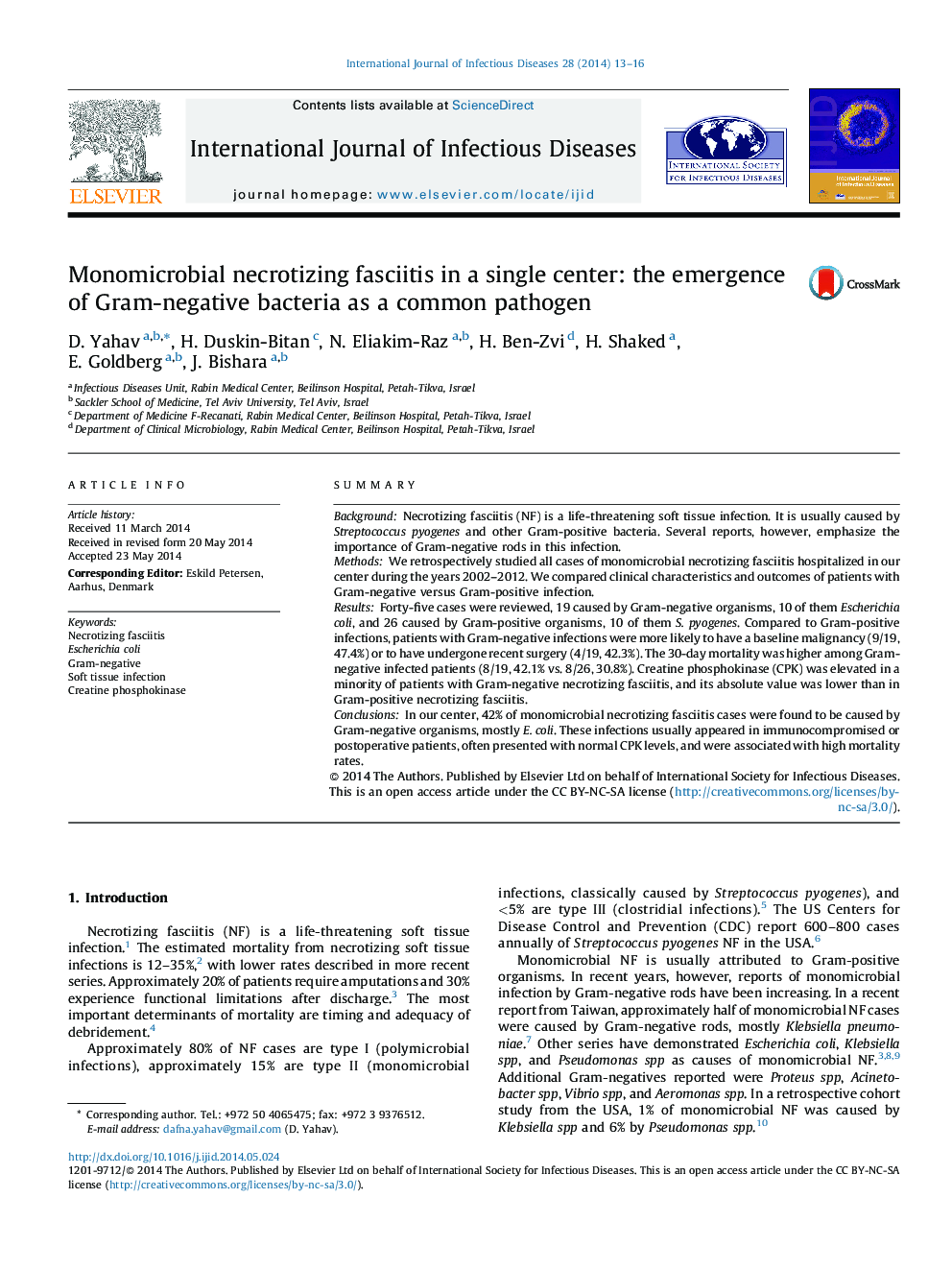| Article ID | Journal | Published Year | Pages | File Type |
|---|---|---|---|---|
| 3362393 | International Journal of Infectious Diseases | 2014 | 4 Pages |
•Gram-negative necrotizing fasciitis is common•Mostly in immunocompromised or post-operative patients•The most common pathogen is E. coli•Associated with high mortality rates•CPK is usually normal and if abnormal, has low values
SummaryBackgroundNecrotizing fasciitis (NF) is a life-threatening soft tissue infection. It is usually caused by Streptococcus pyogenes and other Gram-positive bacteria. Several reports, however, emphasize the importance of Gram-negative rods in this infection.MethodsWe retrospectively studied all cases of monomicrobial necrotizing fasciitis hospitalized in our center during the years 2002–2012. We compared clinical characteristics and outcomes of patients with Gram-negative versus Gram-positive infection.ResultsForty-five cases were reviewed, 19 caused by Gram-negative organisms, 10 of them Escherichia coli, and 26 caused by Gram-positive organisms, 10 of them S. pyogenes. Compared to Gram-positive infections, patients with Gram-negative infections were more likely to have a baseline malignancy (9/19, 47.4%) or to have undergone recent surgery (4/19, 42.3%). The 30-day mortality was higher among Gram-negative infected patients (8/19, 42.1% vs. 8/26, 30.8%). Creatine phosphokinase (CPK) was elevated in a minority of patients with Gram-negative necrotizing fasciitis, and its absolute value was lower than in Gram-positive necrotizing fasciitis.ConclusionsIn our center, 42% of monomicrobial necrotizing fasciitis cases were found to be caused by Gram-negative organisms, mostly E. coli. These infections usually appeared in immunocompromised or postoperative patients, often presented with normal CPK levels, and were associated with high mortality rates.
